In an effort to share postwar and contemporary Italian art, Nancy Olnick and Giorgio Spanu sought to create an exhibition space that could properly house and showcase often large-scale Arte Povera works. To them, it was the art that would take center stage, and the architecture would serve as the container. Architect Miguel Quismondo was the natural choice to lead the project, having worked with the co-founders in close collaboration since 2003.
From an existing 11,000 square foot warehouse, erected in 1964, came another, with Quismondo’s 14,000 square foot addition. The project included repurposing the existing dairy distribution center into what would become Magazzino Italian Art.
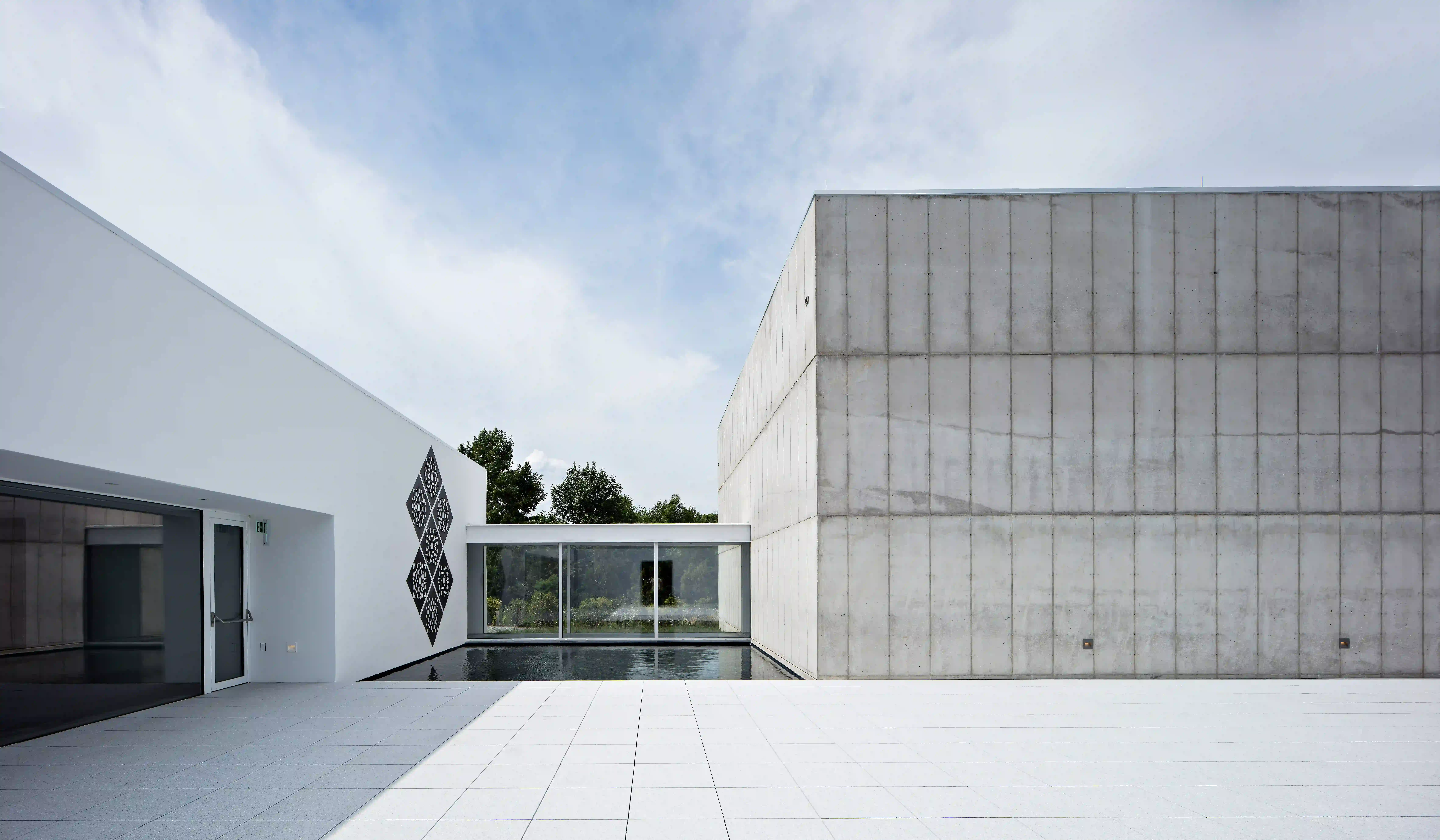
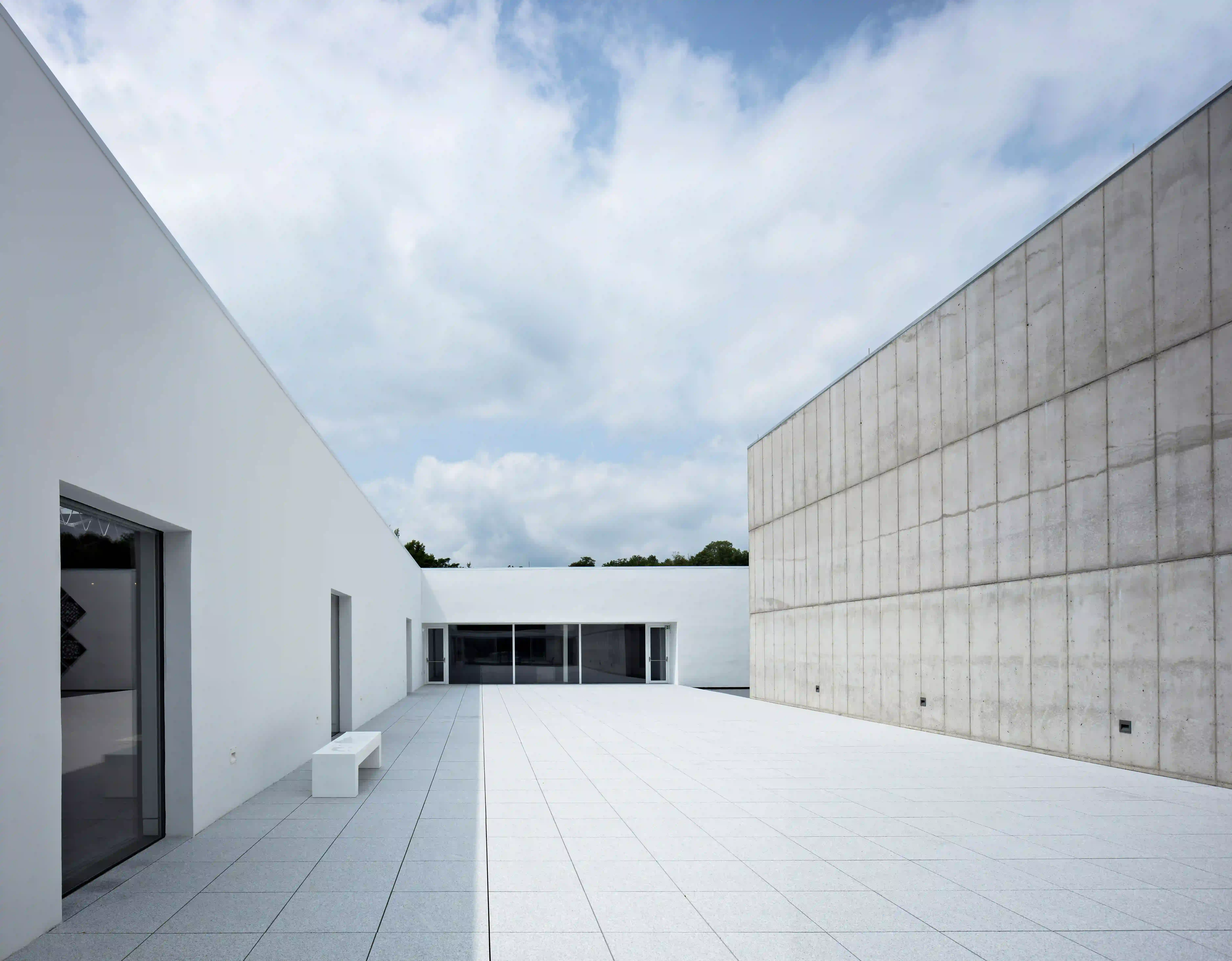
The simple components and building solutions employed by Quismondo adhered to the same philosophies that inspired Arte Povera’s artists: a reliance on materials considered poor, low-quality, or readily available, and attention to conceptual approaches within presentation. It was these discussions early on, in close collaboration with the co-founders, in which architect Miguel Quismondo established a renovation and expansion that would, in its sophistication and simplicity, allow the art to come alive within the space.
The project pays tribute to Magazzino’s name, meaning “warehouse" in Italian, by reiterating its integrity as an industrial warehouse. The use of available materials in a logical, simple way tied back to this idea: the solution for completing the building’s outer shell came in the form of cost-effective concrete, with the interior consisting of white walls and polished concrete floors, resulting in a clean and contemplative place to view the art.
Large windows throughout create a direct interaction between the indoor and outdoor space, including both the natural landscape of Magazzino’s surroundings and the clean lines of the building’s granite courtyard.

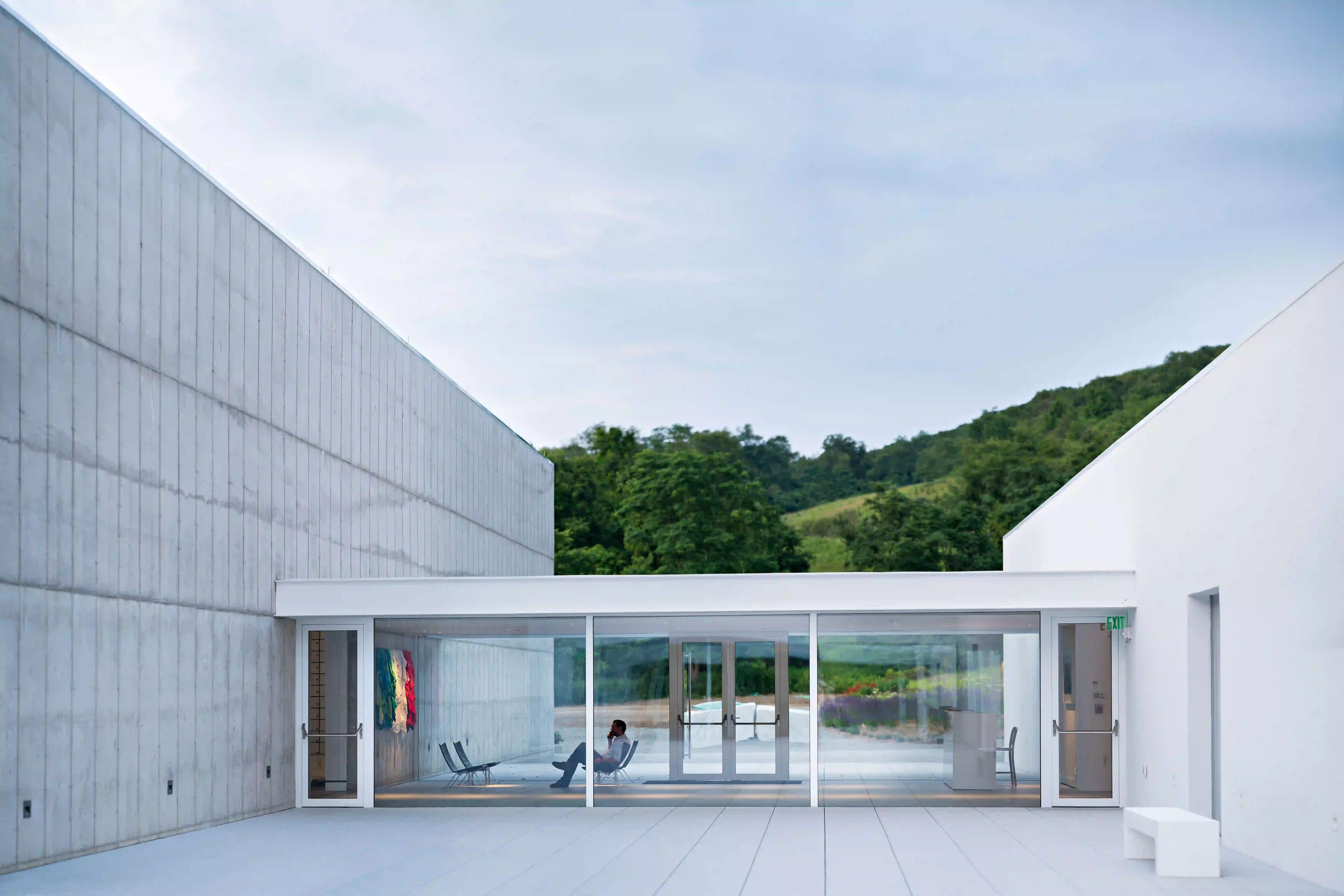
The existing L-shaped building was stripped to its basic components, while the addition was built with structural cast-in-place concrete and metal girders, creating a modulated repetition. It is through the management of natural light that a dialogue between the new and existing building was created. The existing building relies on specific, consolidated light from skylights along the main pathway, while the new galleries of the expansion open with high fiberglass paneled roof, raised in a simple structure involving metal gable trusses, resulting in a subtle, uniform filtering of light. The versatility of both the height and lighting together furthers the distinction between the renovated building and the new expansion, merged elegantly through two glass connectors—that of the lobby and of the reflecting pool walkway—allowing for simple circulation.
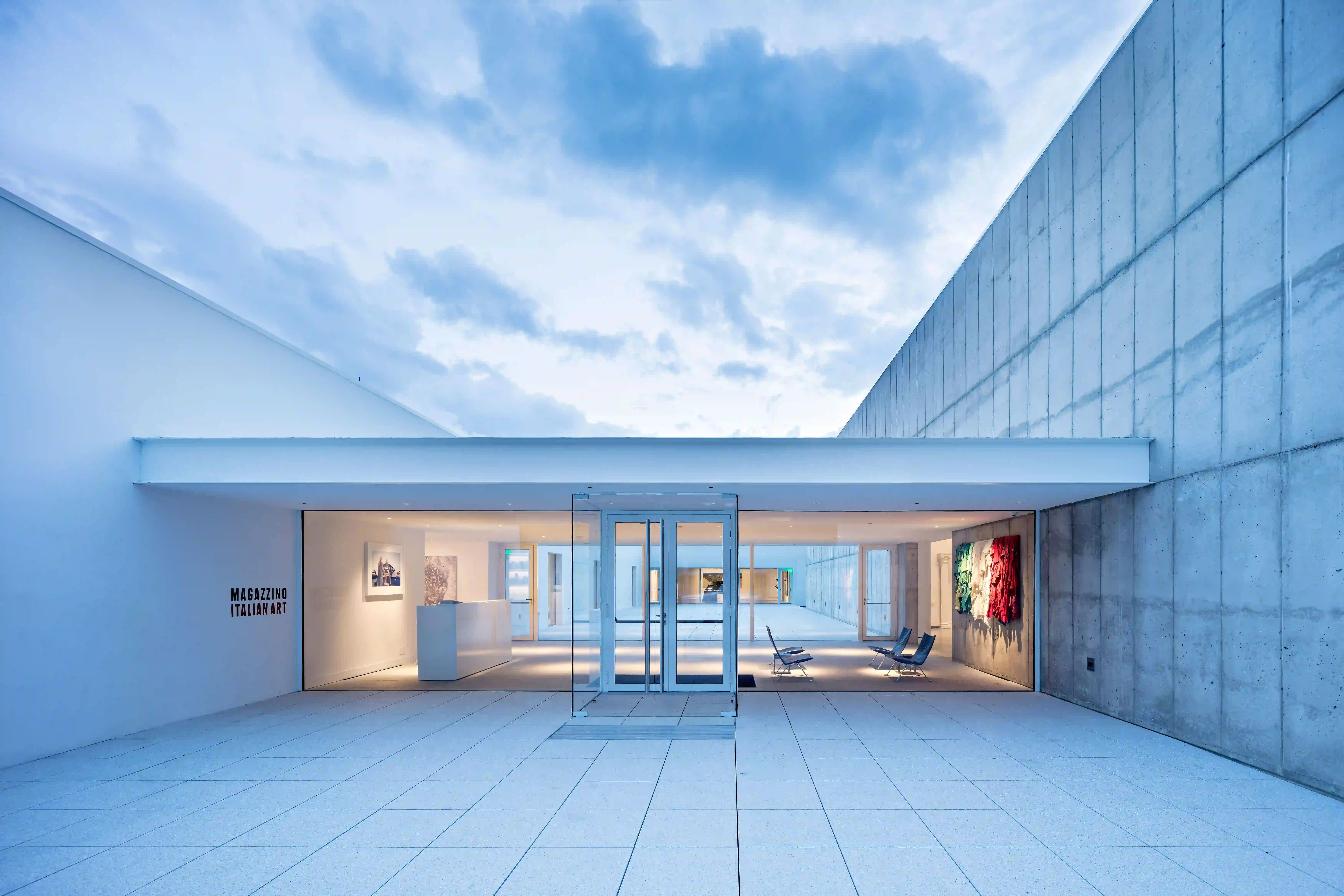
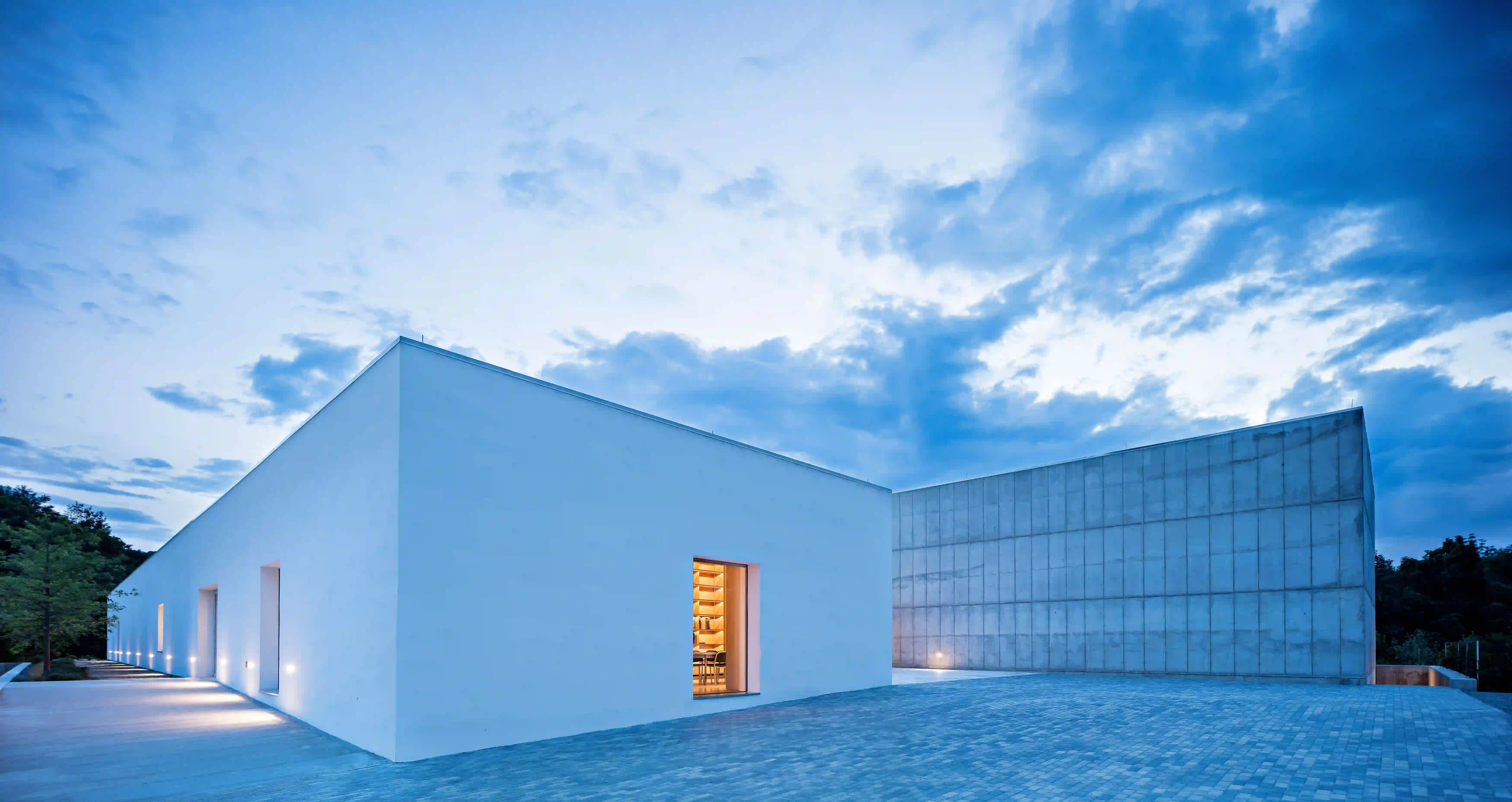
A unique combination of location and purpose contributed to a specific project approach when building Magazzino. Early decisions were made to accommodate the specificities of the art, such as Luciano Fabro’s Efesso II, a 1,500 pound slab of marble suspended by steel cables, which serves as the focal point of Gallery 1, and Pier Paolo Calzolari’s process-based work, which required a compressor and refrigerant pipe.
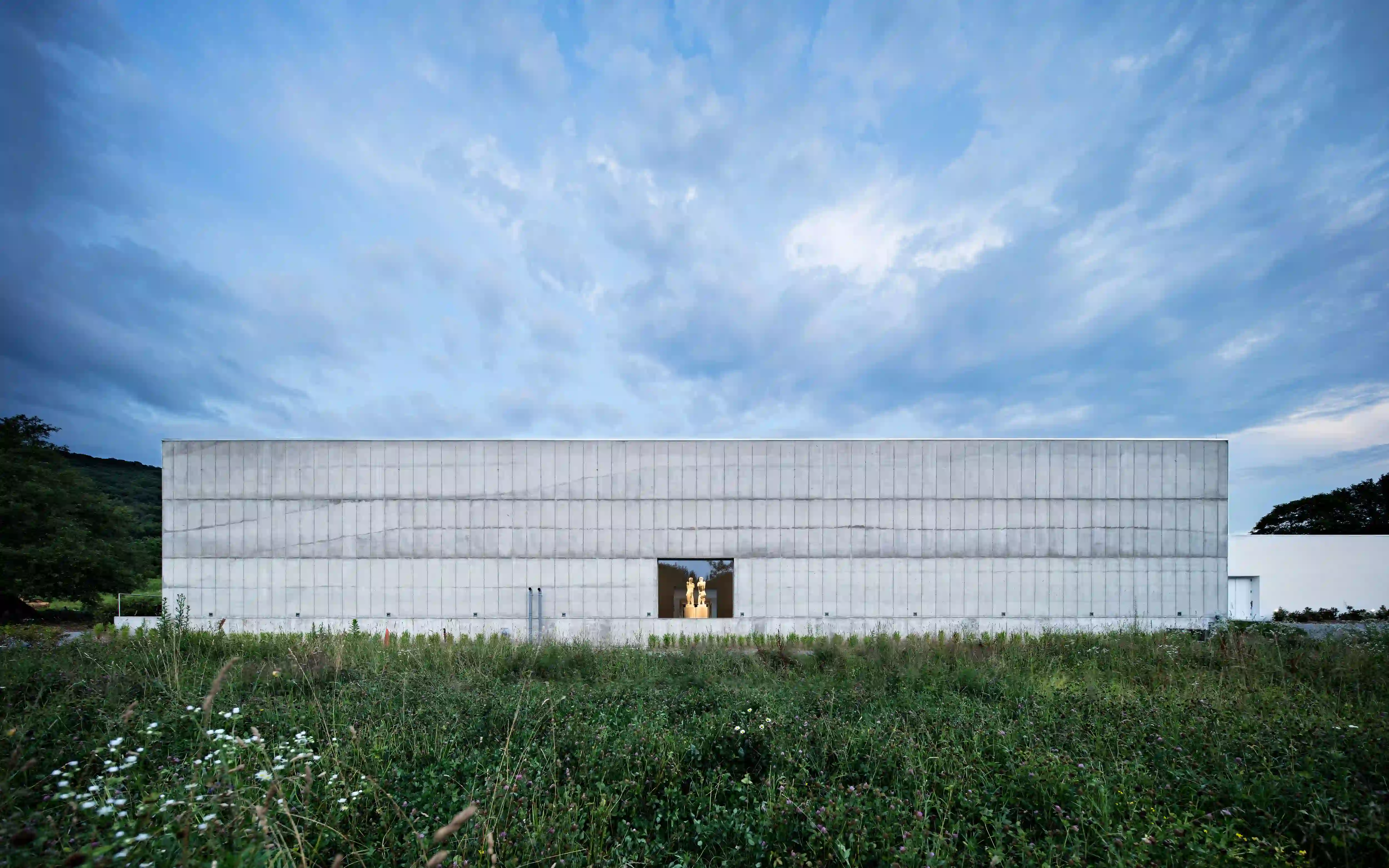
The architect and his team oversaw components of the building project beyond design, operating within the varying roles as building manager and construction manager. The project remained distinctly local; the co-founders are long-time Hudson Valley residents, and 85% of the sub-contractors lived within a 15-20 mile radius of the job site. Magazzino, while an international collection and institution, remains very much rooted in the Hudson Valley region, and the creation of the building reflects this.
The Robert Olnick Pavillion
The Robert Olnick Pavilion, named after Co-founder Nancy Olnick’s late father, is the second building on Magazzino’s campus in Cold Spring, New York, opened to the public on September 14, 2023.

Adjacent to the main building and nestled in the hillside, Magazzino’s newest campus addition mirrors the original structure in its rectilinear structure and concrete facade. Unlike its predecessor, which expanded and renovated an existing structure, the Robert Olnick Pavilion is a ground up project, incorporated into the sloped terrain of Magazzino’s campus to make the most of the natural light and beauty of the scenery.
This pavilion adds 13,000 square feet to the existing exhibition space, providing much-needed programming and guest enrichment resources that the original building was not designed to accommodate, such as a multi-purpose room with auditorium capabilities on the first level and a combined Italian cafe and museum store on the mezzanine. Gallery additions include a main 2,000 square foot gallery in addition to a specific gallery devoted to decorative arts, ceramics, and jewelry.

Magazzino’s second building presented a unique opportunity to reunite Miguel Quismondo with his mentor and world-renowned architect Alberto Campo Baeza. The design of the Robert Olnick Pavilion, in the same spirit as the existing building, returns to materials that echo the logical and humble philosophies of Arte Povera.
In addition, following the modern sensibilities of Magazzino’s main building, strategically placed windows and skylights will allow visitors to enjoy the beauty of the campus, engaging with the natural landscape as well as the art on view in a fresh and varied experience. The focus of the building is that of Gallery 2, where the designers propose the study of an isotropic space, where a cubed gallery space, functioning as a universal container, is flooded with light.
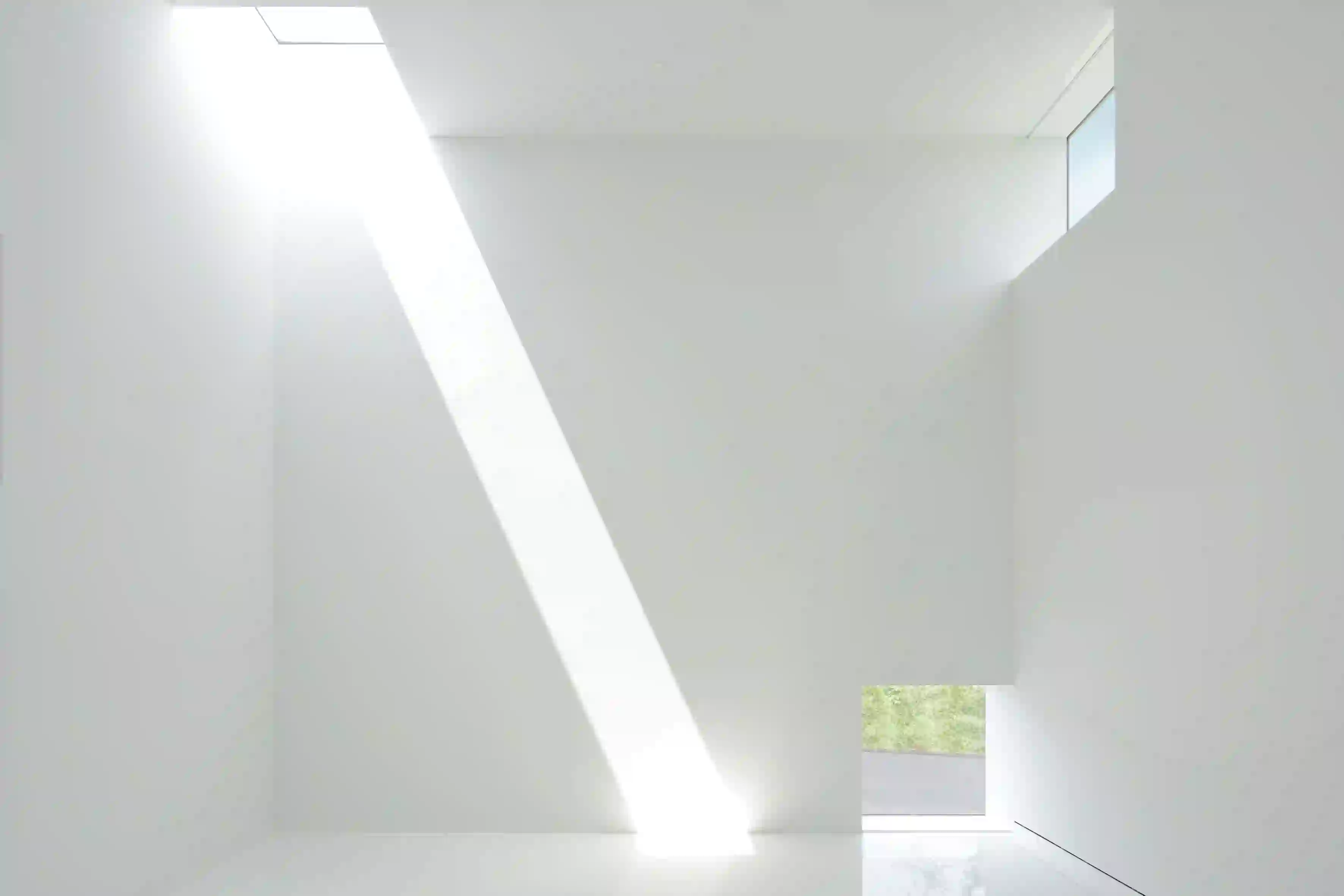
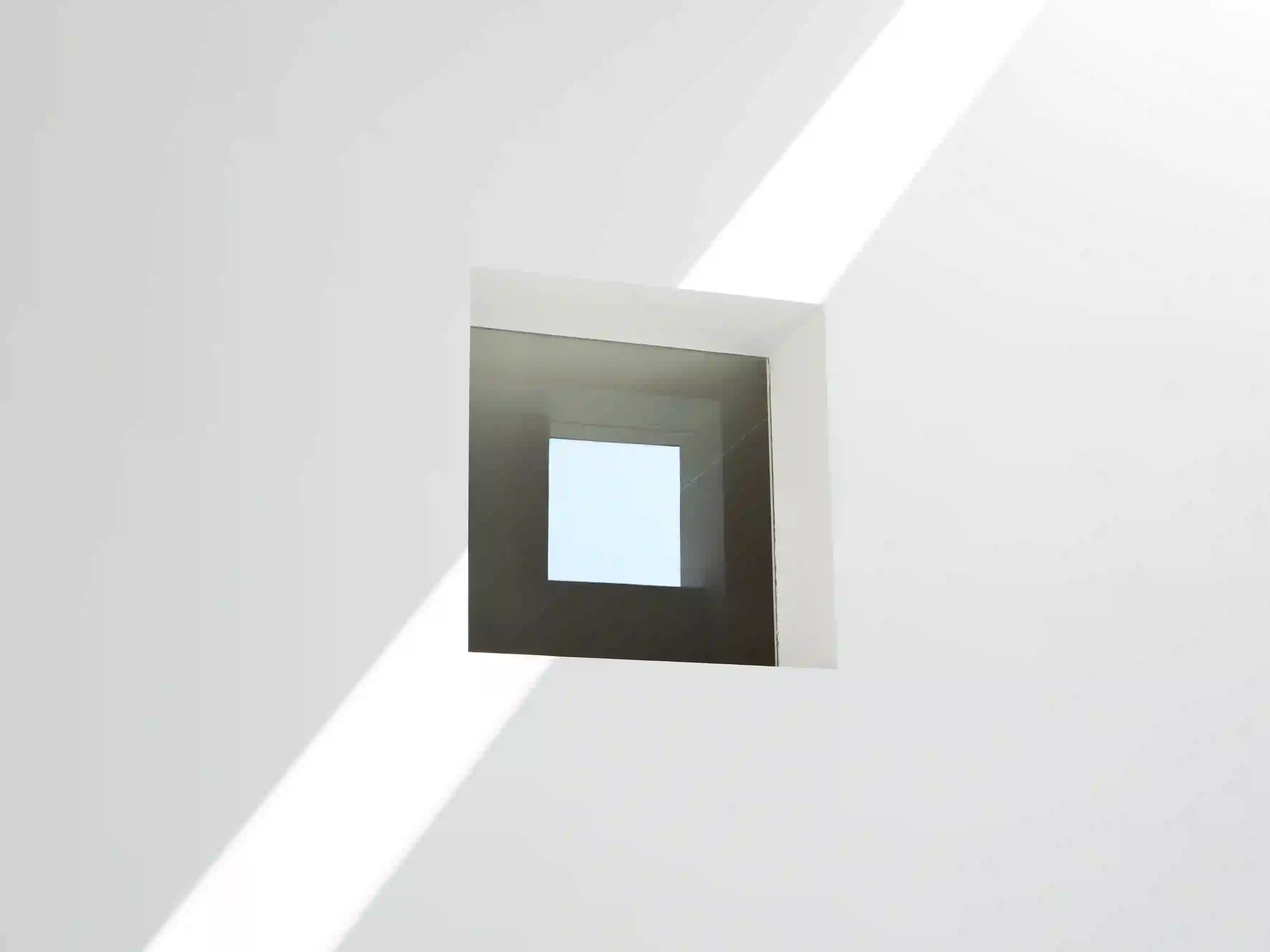
The expanse of space allows Magazzino to expand its educational programming, furthering the museum’s investment in the town of Cold Spring by offering engaging educational programming year round hosted in the additional multi-purpose room and auditorium.
This groundbreaking equips Magazzino with the space and momentum to further its mission and curatorial, scholarly and public initiatives, continuing to explore the impact and enduring resonances of Italian art on a global level.